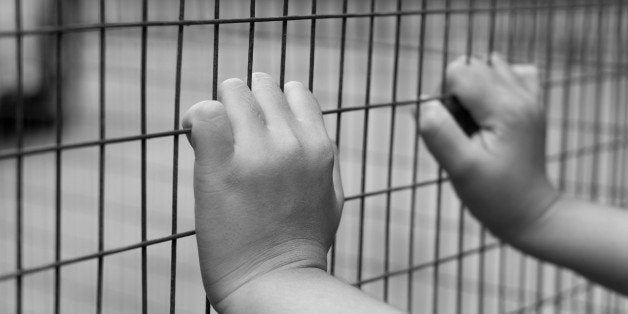
This blog was co-authored by Emily Greytak, PhD, Director of Research at GLSEN.
Back-to-school season is a good time to ask how we are doing as a society when it comes to helping young people navigate the path to a successful life. Judging from a new report looking at the overrepresentation of lesbian, gay, bisexual, transgender, and queer (LGBTQ) youth in our juvenile and criminal justice systems, the answer is a definitive, "Not so well."
A new report out today, Unjust: How the Broken Juvenile and Criminal Justice Systems Fail LGBTQ Youth, examines how as many as 3.2 million LGBTQ youth are at risk for becoming enmeshed in our juvenile and criminal justice systems. In fact, LGBTQ youth are twice as likely to end up in juvenile detention; 20 percent of youth in juvenile justice facilities identify as LGBT or gender non-conforming compared to 7-9 percent of youth in general.
That's a bitter truth in a nation guided by equal protection under the law and an aspiration that our children should all have a fair chance to learn, grow and succeed. So what's behind this devastating statistic?
Family rejection, discrimination in our communities, discriminatory enforcement of laws, and hostile school environments all play a part. But let's focus on how the climate in our nation's schools puts many LGBTQ youth at greater risk for being criminalized. We all know that being bullied at school can be devastating. LGBTQ students experience disproportionate rates of in-school victimization, while also facing a lack of support from or recourse through school officials. Recently released statistics from the Centers for Disease Control and Prevention (CDC) found that lesbian, gay, and bisexual youth were twice as likely to be bullied as heterosexual peers, and national studies indicate that transgender youth experience even higher rates of bullying.
Studies show that LGBTQ youth who are bullied at school are at higher risk of mental health challenges, missing school, and deciding not to attend college. Paradoxically, these students also are the targets of harsher disciplinary measures by schools--even though they are frequently the victims of harassment and violence. These factors together result in LGBTQ young people to be more likely to drop out of school, which in turn means they're also more likely to have run-ins with law enforcement.
LGBTQ young people also are among the groups of students who are more likely to be suspended, expelled, or otherwise removed from school settings -- often for relatively minor offenses. This puts them on track to enter the so-called "school-to-prison pipeline." Fully one-quarter of LGBTQ students in a GLSEN 2013 nationwide survey had been disciplined at school for public displays of affection that would not result in discipline if the display of affection had been between non-LGBTQ students. Furthermore, LGBTQ youth are at risk for discipline if they violate discriminatory practices, such as gendered dress codes.
The bottom line is that our schools are failing when it comes to creating a level playing field for LGBTQ students and protecting them from bullying and harassment. The result is that LGBTQ youth are significantly more likely to enter the criminal justice system. It's no wonder that the percentage of LGBT and gender-nonconforming youth in juvenile detention is double that of LGBT youth in the general population.
Even more alarmingly, once LGBTQ youth are in the system, they face exceedingly high levels of mistreatment and abuse. Surveys show, for example, that LGBTQ youth are particularly vulnerable to sexual assault and abuse by staff and other youth in juvenile detention facilities. A federal study found that 10.5 percent of LGB youth had been sexually assaulted by a peer compared to 1.4 percent of heterosexual youth. Aggravating the problem is the fact that transgender youth frequently are placed in facilities according to the sex on their birth certificate instead of their lived gender. This happens despite federal requirements that placement decisions should be individualized and should take into account an individual's personal safety.
In this election year, we hear a lot of talk about how young people are our future and how we should be doing everything we can to help them succeed. Let's start by making a commitment to treating all young people with the respect and the fairness they deserve--whether in our schools, in our communities, or in our juvenile and criminal justice systems.
Follow GLSEN Research on Twitter: @GLSENResearch
